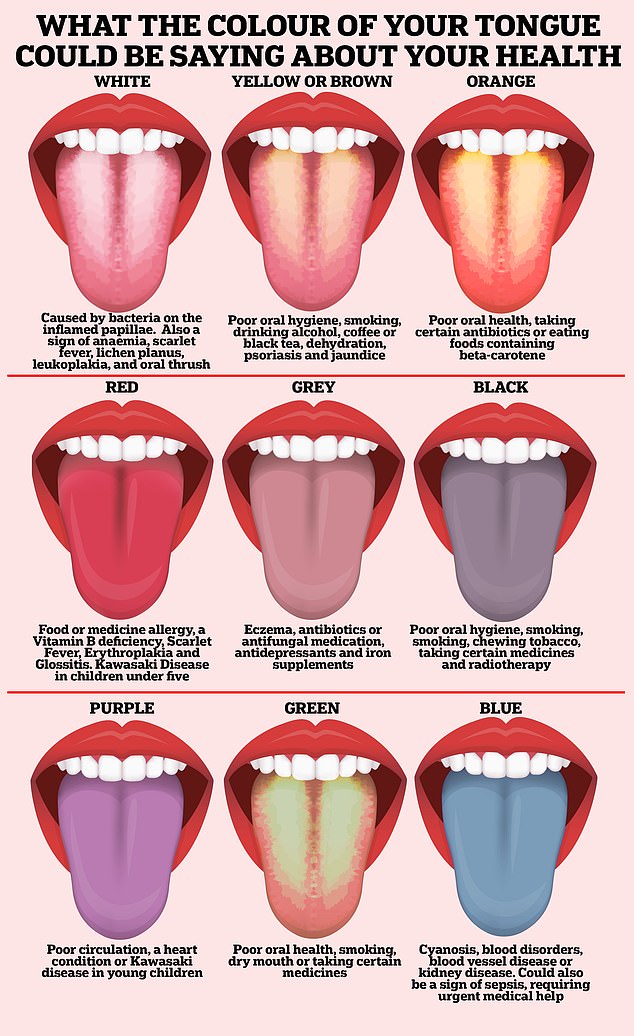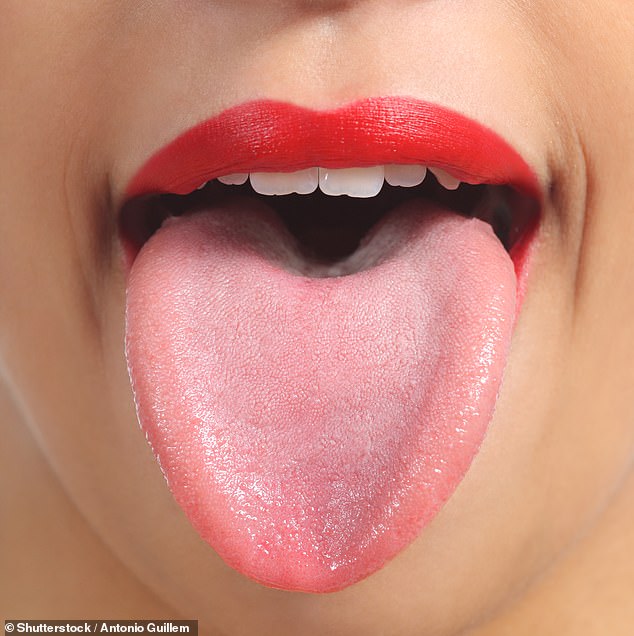It is, if you believe what you see on TikTok, surprising “proof” that you shouldn’t drink coffee: strange cracks appear on your tongue.
In the video, Dr. Anis Khalaf, a traditional Chinese medicine advocate from Florida, said this, along with a thick yellow coating on the tongue, was a sign of a “yin deficiency” in the body, a “insufficiency” of body fluids.
And, according to Chinese medicine, coffee is considered to make this worse, interacting with people’s “fire element”, drying and warming the body.
As such, people with low yin should avoid the classic morning pick-me-up, or so claims Dr. Anis, who has almost half a million followers on the platform.
These aspects of traditional Chinese medicine, as well as the linking of sections of the tongue to certain organs, have shaky scientific foundations, at least in Western medicine.
Normally a healthy pink, changes in tongue color can indicate a variety of possible health problems.
However, according to experts, there are some changes in your tongue (and signs that you’re drinking too much coffee) that you should pay attention to.
white tongue
Having a white tongue can be a sign of multiple conditions, and while some are purely cosmetic, others can indicate a medical problem that needs treatment.
The first is anemia, when the body does not produce enough red blood cells, which can give the tongue a pale whitish appearance.
Another is lichen planus, a rash on the tongue that experts believe is triggered when the body reacts to a viral infection or certain medications.
A similar-looking condition, called leukoplakia, can represent an abnormal growth on the tongue that can potentially progress to oral cancer.
Whitish spots on the tongue that disappear when rubbed may be an indicator of oral thrush, a fungal infection.
A white or yellow coating on the tongue can also be an early sign of scarlet fever bacterial infection.
Finally, a condition called geographic tongue, which is an irregularity in the way tongue tissue is replaced, can cause white spots to appear.
The condition, which can run in families, is mostly harmless, but can cause minor irritation.
Yellow or orange tongue
A yellow tongue is usually a sign that you need to improve oral hygiene, as it is caused by bacteria that grow on the tiny remains of food left in the organ.
Being a smoker, in addition to being dehydrated, can increase the risk of this happening.
A yellow or white tongue can also be an early sign of scarlet fever and some parts of a geographic tongue may appear yellow.
Jaundice, a sign that the liver is not working properly, can cause the skin, eyes, and tongue to turn yellow.
Poor oral health, certain medications, and eating too many foods rich in a natural orange compound called beta-carotene, such as carrots, can also cause the tongue to turn orange.

A healthy tongue should be pink, with small bumps (or papillae) all over its surface. However, a variety of other colors could be telltale signs that a person is unwell.
red tongue
A bright red tongue can be a sign of various conditions.
The geographic tongue spots discussed above, and mostly harmless, can have a noticeably reddish hue.
While early signs of scarlet fever may include a whitish or yellowish tongue, once the infection progresses, the tongue becomes red, swollen, and develops bumps, giving it the nickname “strawberry tongue.”
A red spot on the tongue can also be a sign of a condition called erythroplakia.
This is similar to white spot leukoplakia in that it represents potentially abnormal cells that could develop into cancer.
A red tongue can also be a sign of Kawasaki disease, which causes blood vessels to swell throughout the body, a rare condition that only affects one in 25,000 children in the UK.
Having a red tongue can also be a sign of folate deficiency, as it causes the body to produce abnormally large red blood cells that cannot function properly.
Folate helps properly maintain the body’s nervous system and foods such as meat, fish, eggs, dairy products and vegetables are considered good dietary sources.
gray tongue
Many of the same conditions that cause the tongue to turn whitish can also cause it to appear gray.
However, there are certain conditions that can specifically cause the organ to turn gray.
One of them is eczema, and one study reported that people with this skin condition, which causes dry, cracked skin due to a lack of moisture, are at risk of developing a grayish tongue.
Taking too many iron supplements, as well as the side effects of some medications, can also cause the tongue to turn gray.
black tongue
A condition called black hairy tongue, unsurprisingly, gives the tongue a dark hue.
While dramatic, it is not as harmful as it seems. The condition is caused by the buildup of dead cells on the papillae, the small bumps on the surface of the tongue.
This causes food and bacteria to become trapped, giving the organ an alarming discoloration.
It is mainly triggered by poor oral hygiene, although smoking and drinking alcohol can also contribute to its development.
purple tongue
A purple or bluish tongue can be a sign of poor circulation in the body.
In addition to red tongue, some doctors also consider purple tongue to be a sign of Kawasaki disease.
green tongue
Like yellow tongue, the appearance of a green tongue is the result of poor oral health, smoking, dry mouth, or taking certain medications.
Bluetongue
Blue tongue is considered a medical emergency as it is a sign that the body is struggling to get enough oxygen.
It is usually accompanied by other signs, such as the skin or lips also turning blue.
Lack of oxygen can be caused by numerous conditions, such as sepsis, heart failure, or a dangerous blood clot.
People are advised to call 999 if they or someone they care for has their tongue or other body parts suddenly turn blue.

Have you ever wondered what exactly happens inside your body after you take that first sip?
In his TikTok video, Dr. Khalaf, who has a degree in Oriental Medicine and describes himself as a “candidate” to become a medical doctor, advised people to get their tongue checked if they were wondering if they should drink coffee.
“If you have a lot of cracks on your tongue with a thick yellow coating, you probably shouldn’t drink coffee,” he said.
Continuing to give advice to her 457,000 followers, she added: “This is a yin deficiency with heat and humidity, which basically means a fluid or cold deficiency with the heat taking over.”
Dr. Khalaf, who also advocates the merits of homeopathy, an alternative medicine based on the power of dilution and for which there is no good evidence, has a disclaimer on his website about following medical advice based in traditional medicine.
‘This content is for informational and educational purposes only. “It is not intended to provide medical advice or to substitute such advice or treatment from a personal physician,” it reads.
“All readers/viewers of this content are advised to consult their physicians or qualified health professionals regarding specific health issues.”
There are accepted signs that you may want to reduce your caffeine intake.
Dr Duane Mellor, a dietician at Aston University, said: “There have been no reported oral side effects from excessive caffeine-related coffee consumption.”
However, he added that known side effects of drinking too much coffee included “insomnia, irritability and anxiety in susceptible people, as well as heart rate variability.”
Dr Mellor added: “Other side effects may include stomach upset and changes in bowel habits.”
NHS guidelines say around 400mg of caffeine a day is safe for adults, the equivalent of four regular cups.
Pregnant women are recommended to consume around half, while the recommended limit is around 100 mg for teenagers.

